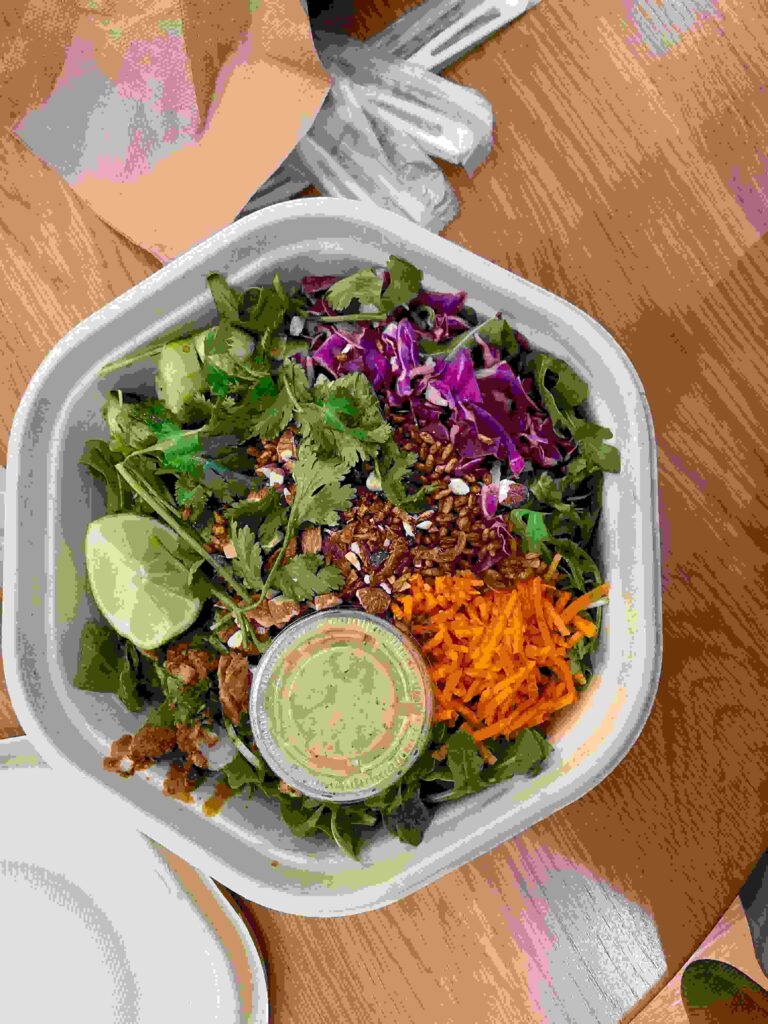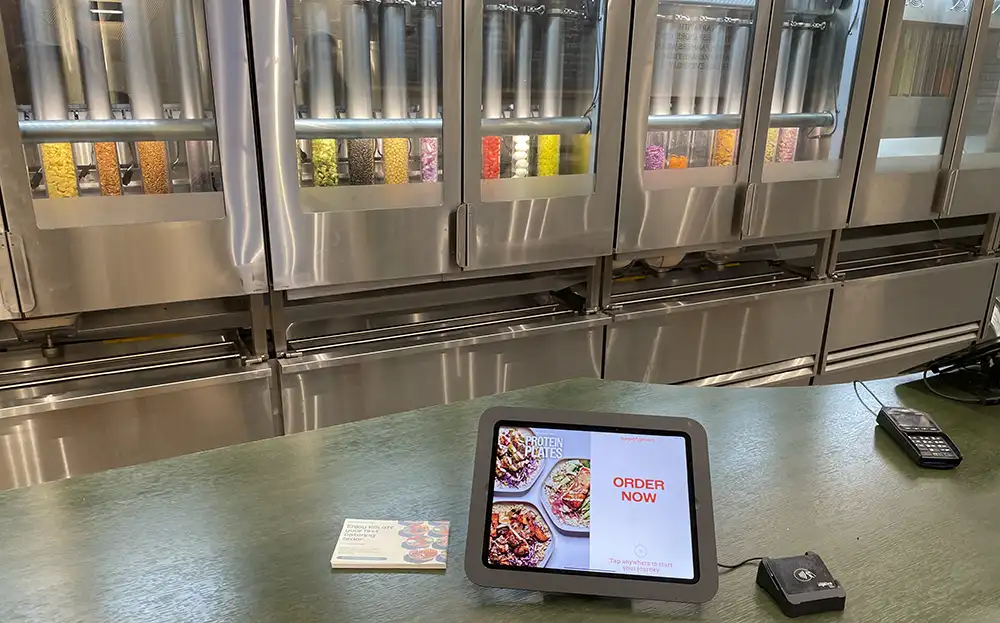A robot made lunch for my wife and me.
Not entirely, of course. But a large part of the salad bowls that we had at Sweetgreen’s new location in Naperville, IL (6 or 7 miles south of our home), did come through a robotic assembly line rather pretentiously named Infinite Kitchen. Human staff members added a couple of optional extras.

Sweetgreen is a fast-salad chain (with some limited entrée offerings) that has been losing money for years, particularly since the pandemic.
I learned about this location from a rather uncomplimentary article in Fast Company: “With Sweetgreen’s third-quarter earnings report out this week, which shows that the company continues to lose money but not as much as it did a year ago, both CEO Jonathan Neman and analysts see this one store in the south suburbs of Chicago as the future of the chain.”
The article expressed some skepticism about this as a means of saving the company, which was hit hard by the pandemic.
“The robot dispenses salad ingredients by shooting perfect portions from tubes into bowls,” Fast Company writes, accurately enough. “The company spent years developing the tech. It took two years, for example, to figure out how to automate the crumbling of goat cheese atop a salad.”
Skepticism about the chain is connected with the fact that, as the Fast Company article says, “Sweetgreen is among a handful of modern restaurant chains that have preferred to talk about their business in tech terms, explaining how they operate and scale like a tech company that serves food, rather than a restaurant company that uses technology.”
Another factor: on November 3, Sweetgreen IPO prices were down 80 percent from their value at their initial public offering (IPO) two years ago, according to Fast Company.

I am not going to make any financial projections about Sweetgreen, but from my point of view and that of my wife, the Sweetgreen robotic lunch was a pleasant and novel experience. Both of us ordered and enjoyed the Crispy Rice Bowl (blackened chicken, raw carrots, shredded cabbage, cucumbers, cilantro, roasted almonds, crispy rice, wild rice, arugula, and spicy cashew dressing—600 calories). I wouldn’t call it a bargain—the check came to $39.80, including one bottle of jasmine green tea and a can of kombucha—but prices at ordinary fast-food places have been climbing up that way of late. Service was prompt: our orders were ready 3-5 minutes after ordering, as promised.
My wife, who has a number of food sensitivities, was particularly pleased that the ingredients were all listed clearly and were all things she could eat.
The Sweetgreen location on Naperville’s South Main Street has been open for six months, a staff member told me. The store’s restaurant-level margin in June was 26 percent—”significantly” higher than any new location in its first month, said company CEO Jonathan Neman.
Sweetgreen will be opening another Infinite Kitchen location in Huntington Beach, CA. Eventually the company hopes to automate all of its locations.
From my experience, if the chain can pull this off, they can do quite well.
More broadly, the fast-salad concept offers hope for the produce industry, which has long struggled to get Americans to eat more of its offerings.
Like it or not, fast food has become the American cuisine. Any steps that can bring it more in line with dietary recommendations—including higher consumption of fresh fruits and vegetables—can only help the industry, and, we may hope, the nation’s health as well.



